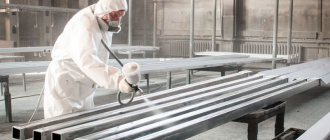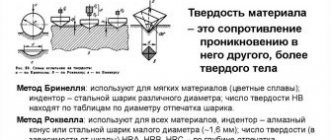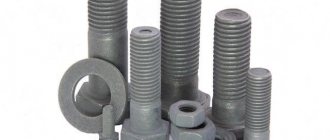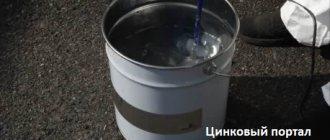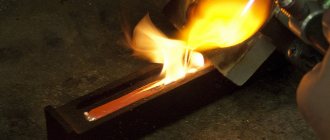Metal galvanizing methods
The coating together with the metal forms a galvanic couple, where zinc has a higher degree of electronegative charge compared to steel. Accordingly, zinc undergoes corrosion, and steel reacts practically without any reaction. The anti-corrosion protection of the metal will last until the zinc coating is destroyed.
There are several galvanizing technologies. Some technologies allow do-it-yourself galvanizing with obtaining an acceptable result.
There are the following methods of galvanizing metal:
- cold;
- hot;
- galvanic;
- thermal diffusion;
- gas-thermal.
When using steel structures on the surface of which a layer of zinc is applied, you must remember that they cannot be subjected to strong mechanical stress, since the protective metal coating is highly brittle and can be destroyed.
Let's look at different types of metal galvanizing.
Hot galvanizing method
Hot galvanizing of metal allows us to achieve maximum quality of products and ensure their durability. This method has a key drawback - its implementation involves the use of chemical reagents to treat the surface, and the procedure is performed in molten zinc.
The hot galvanizing method of steel includes preparing the surface of the product and the actual procedure of coating the metal with zinc.
Steps to prepare the surface to be treated:
- cleansing;
- degreasing;
- application of acid solutions;
- washing and fluxing;
- drying the surface.
The disadvantage of this method is that the dimensions of the products are limited by the dimensions of the bath with molten zinc. This method is practiced at large production facilities when working with power transmission poles, scaffolding or lighting masts.
The method involves a lot of labor and the use of complex equipment, so it is not suitable for home use.
Cold galvanizing of steel
Cold galvanizing technology involves applying a zinc-containing mixture, for example, zinconol, to the surface of the product. It must be applied with a roller or brush.
If you need to cover structures of complex shapes or hard-to-reach places, you can use a spray gun. Thanks to special compounds, a protective layer is formed on the surface, consisting of more than 90 percent zinc.
This galvanizing method is the only one acceptable for providing anti-corrosion protection to structures that cannot be galvanized in any other way. For example:
- installed pipes;
- elements of railway tracks;
- power line supports and other structures in a stationary or mounted version.
Cold galvanizing of steel products is carried out over a wide temperature range; the resulting coating has high protection, elasticity, and resistance to mechanical stress and temperature changes.
Cold galvanizing has its disadvantages. For example, the formed coating does not have high enough resistance to mechanical stress; safety precautions must also be strictly observed if the procedure involves the use of organic solvents.
Galvanic galvanizing method
With the help of such galvanizing, the thickness of the protective layer can be adjusted, while the layer is uniform and has high decorative qualities. Metal and zinc are combined at the molecular level during galvanizing; the coating has high adhesion to the base material. The degree of adhesion is affected by the presence of oxide and fatty films on the surface, which are almost impossible to remove.
Galvanic galvanizing is carried out as follows:
- the structure and zinc plates are placed in an electrolytic solution, then the positive and negative contacts of the current source are connected to the wall of the bath and the plates;
- due to the potential difference, the plates dissolve in the electrolyte, and zinc molecules settle on the surface of the product and form a uniform protective layer.
The key advantage of this method is that in this way a protective layer is formed on the surface, which has special decorative characteristics. The thickness of the layer can be adjusted. But the method also has its drawbacks. In particular, this is a high cost.
Thermal diffusion galvanizing technology
The essence of the method is that the part, together with a dry zinc-based mixture, is placed in a sealed container, where a temperature of about 2600 degrees is created. At this temperature, zinc goes into a gaseous state, and accordingly, the process of diffuse penetration of zinc atoms into the surface layer of the product is accelerated. This galvanizing technology is used in cases where it is necessary to form a protective layer with a thickness of 15 microns on the metal surface.
The preparation of metal products for thermal diffusion coating with zinc does not differ from the hot method. Advantages of this method:
- the process takes place in a sealed container, therefore, it is environmentally friendly;
- there are almost completely no pores on the protective coating, which has high adhesion to the surface;
- the coating receives a high degree of protection;
- complex geometric shapes and parameters of zinc-coated products are preserved;
- the resulting waste does not require special disposal.
Disadvantages of the thermal diffusion method:
- the finished coating does not have a metallic sheen and has a dirty gray tint;
- low productivity;
- zinc dust in the air during work can harm the body;
- The zinc coating is not uniform in thickness.
Thermal spraying
The gas-thermal galvanizing method is suitable for coating a three-dimensional part or sheet of metal with zinc. Its essence is that zinc, in the form of a dry mixture or wire, is sprayed in a gaseous environment onto the surface of the workpiece. The technology is used to apply a layer of zinc to large-sized products that cannot be processed otherwise.
Zinc plating process:
- particles of molten metal are applied to the surface to be treated, forming a thin layer with a scaly structure;
- Paints and varnishes are applied to the porous coating. The layer created by combining protects the product and allows it to be used for a long time in conditions of high humidity, constant exposure to fresh or sea water and other aggressive environments.
The parameters of zinc coatings applied by the methods listed above are established by the relevant GOST. As already mentioned, some types of galvanizing can be done independently at home. This applies to cold galvanizing technology or the electrochemical method.
To perform galvanizing yourself using an electrical method, you need to carefully prepare the surface of the workpiece. Preparation includes:
- cleaning;
- degreasing;
- acid pickling;
- rinsing under running water.
When performing galvanizing with your own hands, you need to take into account that the following factors influence the quality and thickness of the coating:
- current density per unit area of the product;
- temperature of the electrolytic solution;
- electrolyte temperature;
- geometry and complexity of the product shape.
Galvanizing metals allows you to slow down the process of corrosion of products. Galvanizing methods depend on the operating conditions of the products. You can galvanize materials at home.
Source: https://tokar.guru/metally/cinkovanie-metalla-svoimi-rukami-i-tehnologii-ocinkovki.html
Why is a layer of zinc applied to steel?
It is well known that products made of steel are very susceptible to corrosion processes, especially when used in conditions of high humidity. Meanwhile, if you galvanize a steel part, you can provide it with reliable protection against corrosion. This is explained by the fact that the zinc coating forms a galvanic couple with the base metal, in which zinc has a greater degree of electronegative charge than steel.
In such a galvanic couple, when its components are exposed to aggressive environmental factors, it is the zinc that is exposed to corrosion, and chemical reactions of steel are practically eliminated. Thus, corrosion protection of the steel will be ensured until the zinc coating is completely destroyed. At the same time, in those areas of the steel product where the zinc coating is destroyed for some reason, zinc hydroxide is formed under the influence of oxygen and moisture, which also has good protective properties.
Advantages of applying zinc before painting
Galvanizing steel products allows them to provide not only barrier, but also electrochemical protection. Galvanizing of metal can be carried out using different technologies, for the implementation of which various equipment is used. Using certain types of such technologies, you can perform galvanizing at home and still achieve excellent results.
Galvanic galvanizing
At room temperature, zinc almost does not react with chemical elements; when heated above +225°C, the oxidation rate increases critically. As the thickness of the corrosion film increases, oxidative processes slow down. Galvanic galvanizing protects products made of iron, nickel, copper and other metals from corrosion.
Types and technologies of galvanizing
Currently, anti-corrosion galvanizing is carried out in several ways. The specific method is selected taking into account the purpose and size of the parts and the technological capabilities of the enterprise and the availability of equipment:
- Cold galvanizing. The coating process is carried out as a result of electrochemical reactions, adhesion is ensured by molecular attraction. To protect against corrosion, surfaces are coated with special paints with a high percentage of highly dispersed zinc. The simplest and most accessible method is widely used in the manufacture of consumer goods and metal structures of prefabricated buildings.
- Hot galvanizing. In terms of frequency of use, it ranks second among all methods, and in terms of quality of coverage it occupies a leading position. Disadvantages - large energy losses, harmful effects on the environment. The prepared parts are immersed in special baths with molten zinc, after exposure they are removed and left in a suspended state to remove excess and cool.
- Galvanic galvanizing. Technical parameters meet the requirements of GOST301-86, coating thickness up to 30 microns. During the process, zinc moves from the anode to the surface of the product; to impart the desired properties to the coating, electrolytes of different chemical compositions are used. The disadvantage of the method is the difficulty of cleaning technological compositions.
- Gas thermal galvanizing. One of the complex methods, zinc is melted in a heated gas stream and directed to the surface of the workpiece. Used for processing industrial elements with large linear dimensions. Precipitates are porous; to increase protection against corrosion processes, an additional coating of a layer of zinc is required.
- Thermal diffusion galvanizing. One of the types of hot-dip galvanizing. The coating occurs due to the penetration of zinc atoms into the steel, forming a complex structure of an iron-zinc alloy. Advantages: parts are processed in confined spaces, which minimizes the harmful impact on the environment, the coating is smooth without micropores, the thickness of the zinc coating varies widely.
How to perform the procedure at home
Galvanizing at home is carried out mainly by the electrochemical method or using cold galvanizing technology, which is explained by the simplicity of these methods. To perform galvanizing yourself using the electrochemical method, you must carefully prepare the surface of the workpiece. Such preparation consists of cleaning and degreasing, as well as acid etching and subsequent rinsing with water.
Diagram of a galvanic installation for self-galvanizing
Your own device for performing galvanic galvanizing can be made from a direct current source that produces a voltage of about 6–12 V with a current strength of 2–6 A, a container made of dielectric material and a device with which the electrode and the workpiece will be fixed. The electrolyte in this case can be a solution of any salt containing zinc. You can prepare such a solution from battery electrolyte by placing zinc in it for a while and waiting for the dissolution reaction to complete. The resulting composition should be filtered before use for galvanizing.
When performing galvanizing with your own hands, you should keep in mind that the following factors influence the thickness and quality of the coating formed:
- current density per unit area of the workpiece;
- temperature of the electrolytic solution used;
- density of the electrolyte used;
- geometric parameters and complexity of the shape of the processed product.
Types of metal galvanizing
Galvanizing of metal is the most popular method, the purpose of which is to protect the metal surface from the negative effects created by corrosion.
This method is used for numerous metal products, for example, for iron utensils and industrial machine parts, for car body parts and wire ropes, for iron sheets and telecommunication wires.
The main advantage of this method is its relatively inexpensive price and good performance indicators.
Technological process of galvanizing metal
Metal galvanizing technology is applicable either on completely level metal surfaces or on surfaces where there is a slight bend. An unacceptable condition for this technology is the presence of mechanical damage to the surface.
The technological requirements for the process are quite simple. The thickness of the protective coating layer can be different; its determinant is the time of the entire working operation and the temperature at which the process is performed.
At the same time, the thickness does not exceed 1.5 mm.
The process of galvanizing metal is aimed at protecting it from the undesirable effects of oxidation. For many materials, for example, aluminum, zinc and others, it is common to undergo oxidation simply by being in an air environment.
Then a rather dense film appears on their outer surface, which is based on metal compounds that have undergone oxidation. This dense shell provides reliable protection against further penetration of oxidation into the material.
These properties are not typical for iron, so oxidation over time can completely destroy the structure of the material. To preserve the iron, galvanizing is carried out.
Methods for galvanizing metal can be different. In principle, the effect of galvanizing is similar to the protection generated by the tinning process. Tinning is carried out under the influence of another material - tin.
The difference between these two processes is noticeable only in the case when the outer film that protects the iron is damaged.
Tinning in case of mechanical or other types of damage is less effective, since both materials are not a completely reliable galvanic couple.
Types of metal galvanizing are methods of applying a coating that forms a reliable protective film consisting of a zinc layer. Modern technologies provide for the presence of six types of galvanizing. Each of them differs in operation time, properties, equipment used and the thickness of the resulting zinc film.
All classes of metal galvanizing are quite easy to list. Galvanizing can be: gas-dynamic, hot and cold, diffusion, galvanic. The list also includes the method of shopping.
Shooping is a treatment with zinc applied in molten form. In this case, molten zinc is sprayed onto the metal surface using a special gun. In the gas-dynamic method, the layer is applied using a supersonic flow.
Galvanic galvanizing of metal is a method carried out in a special drum. This is where the electrochemical process starts.
As a result of galvanic galvanizing, the metal surface acquires a white, blue or rainbow tint. Sometimes the effect of creating a matte white surface is possible.
This film is mainly applied for decorative purposes, because the layer itself has a negligible thickness. At the same time, the basic adhesive properties are rather weak.
Thermal diffusion galvanizing of metal is a method carried out under the influence of high temperatures. The temperature is selected according to the steel grade, type of workpiece and other conditions.
The whole process takes from 1.5 to 3 hours, depending on what kind of zinc mixture is used, as well as what power the installation itself has. This zinc coating has its own advantages, the main one being the highest hardness.
It is characteristic that when using this method, the working surface requires minimal preparation before starting the process.
Hot-dip galvanizing of metal is a method in which metal products are dipped into a special bath containing pre-molten zinc. The operating temperature is up to 460 degrees Celsius.
As a result of the hot-dip galvanizing method, the metal acquires excellent adhesive properties that cannot be damaged by minor cracks or scratches.
This method has a low cost, therefore it is one of the most common.
Cold galvanizing of metal is the easiest method in terms of preliminary preparation of the material. The whole process consists of applying special primers or dyes to the metal surface.
The peculiarity of such coatings is that they contain about 98% zinc powder. As a result of using the cold galvanizing method of metal, the latter acquires such quality as an attractive appearance.
There is also a guarantee of reliable protection against corrosion for a sufficiently long period of time.
Equipment for galvanizing metal can be different - it all depends on the method chosen for the process. It is worth noting that the process is not carcinogenic, therefore it is quite suitable for carrying out in any production premises. There is no need for special training other than installing the equipment.
The hot-dip galvanizing method, which does an excellent job of providing the metal surface with protection from corrosion, is the most optimal compared to other methods in terms of cost.
This method is most often used by various industrial enterprises. To implement it, you need equipment such as a metal galvanizing bath. The dimensions of this equipment may vary. The restrictions imposed on the size of processed products depend on them.
Source: https://promplace.ru/obrabotka-metallov-staty/cinkovanie-metalla-1482.htm
In what areas is galvanizing used?
Galvanized metal sheets (thickness from 0.4 to 3.2 mm) are widely used in construction for cladding various surfaces:
- Roofs;
- Stan.
Many groups of products are additionally coated with PVC film, which is both a decorative and protective factor. Types of Zn coating are used for:
- Bearing supports of bridges.
- Power lines.
- Pipes of various diameters;
- Cell towers.
Professional metalworking in Moscow
Our company is engaged in the creation of metal structures and metal processing. We offer a wide range of services: galvanizing, welding, sandblasting, powder painting, turning. To provide services, we opened a small plant and purchased modern equipment, so we can carry out the most complex technological operations in metalworking.
The quality of our work has already been appreciated by many Russian enterprises. We cooperate with companies engaged in construction and retail sales of metal products. Ordinary residents and enterprises of Moscow and the Moscow region order metal structures and metalworking services from us wholesale and retail. After completing the work, we deliver the finished products to the consumer.
Zinc coating price
Prices for galvanizing metal in Moscow depend on the technology used. Example:
- Thermal diffusion treatment of parts from 22 rubles/kg (beams, channel bolts, etc.).
- Galvanizing of rolled products (hot method) GOST 9.3077-895 - 32 rub./t.
- Application of galvanic technologies – from 14.5 rubles/kg.
- Galvanizing of pipes from 7 to 29 rubles/kg (including beams, channels).
Call and check the full cost of the work with our managers. Galvanizing of metal in Moscow and the Moscow region can be carried out during the working day.
Metal galvanizing
Today, a large number of methods have been created to protect against corrosion. They are aimed at ensuring that, with the help of special solutions or substances, a thin protective film appears on the surface of metal products, which prevents oxygen and products present in an aggressive environment from reaching the metal. Galvanizing of metal surfaces is one of the most effective methods of preventing the appearance of corrosive plaque.
Metal galvanizing process
Metal galvanizing is the procedure of applying a thin layer of zinc to the surface of a metal product. This metal is excellent for creating solutions that are designed to protect against corrosion. It belongs to the category of resistant to the influence of aggressive environments.
